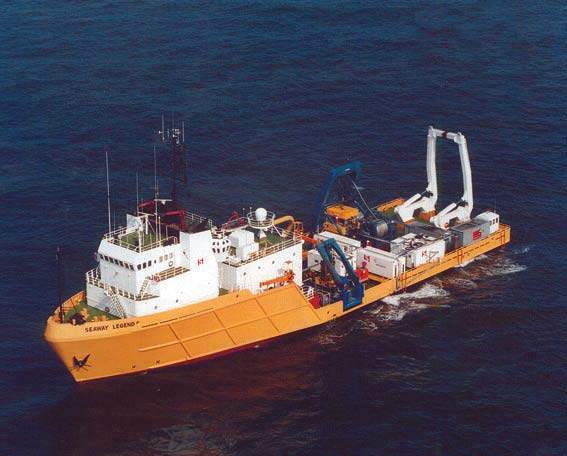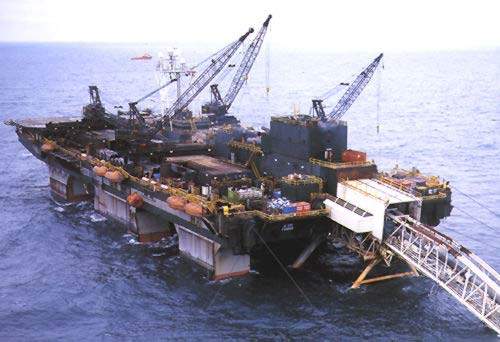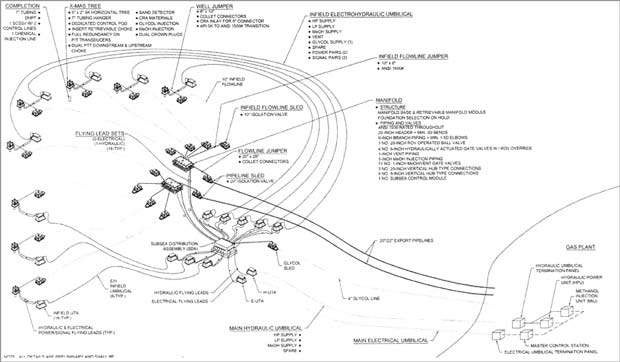The Scarab and Saffron gas fields represent the first deepwater development to be undertaken in the Eastern Mediterranean.
The project lies in the in the West Delta Deep Marine concession and is the largest gas field development in Egypt.
Ownership
The field is owned by the Burullus Gas Company consortium, which consists of operator BG Group (25%), Edison Co (50%) and the Egyptian General Petroleum Corporation (EGPC, 255).
Discovery
The area lies some 90km from the Nile Delta shoreline in water depths of 250m-850m.
Since the concession agreement was finalised in 1995, 3,685km² of 3D seismic, together with 4,900km² of 2D seismic, have been shot.
In June 1998, two successful wells were completed in separate accumulations.
The first well, Scarab-1, tested in excess of 30mmscfd, while the second well, Saffron-1, tested in excess of 90mmscfd, representing one of the highest gas-flow rates ever recorded in Egypt.
Two appraisal wells, Scarab-2 and Saffron-2, were drilled in June / July 1998 and March 1999 respectively.
Scarab and Saffron contain high-grade methane gas with very low levels of condensate, and little or no hydrogen sulphide or carbon dioxide.
Field Reserves have been estimated at in excess of four trillion cubic feet (Tcf).
Development
The US$600m development will comprise a long-distance subsea tieback to new onshore facilities located adjacent to the Rosetta onshore processing plant, near Alexandria.
The initial development phase will include eight subsea wells tied back to two manifolds, and to the shore via two (20in and 22in) export lines.
A multiplexed electro-hydraulic control system and umbilicals will control the wells from the shore.
Provisions will be made for future expansion by means of additional wells and manifolds (up to approximately 20 wells in total) to maintain the plateau production profile, as well as onshore gas-compression facilities.
The US$145m contract for the installation of the gas export pipelines was won by Stolt Comex Seaway. The contract included the laying the infield flowlines and service lines, the manifolds and well-control umbilicals.
The pipelay barge LB200 will install the gas export pipelines with the Seaway Falcon installing infield lines. The Seaway Explorer and Seaway Legend will undertake manifold installation, pipeline burial, survey and hydrotest work.
Umbilicals
Nexans signed a €23m contract with Burullu, for the supply of 100km of umbilical cable in April 2001.
These will deliver power, water and communications services to the subsea facilities.
The 90km main cable will be laid at depths of 250m-850m. The company will also supply eight umbilical cables measuring a total length of 40km for inter-platform connections.
Shore approach
The shore approach work for the gas export pipelines will be subcontracted to the Egyptian national offshore contractor, Petrojet, who will use the Petrojet 11 and Petrojet 12 pipelay barges, equipped with Saturnax automatic welding equipment supplied by the Stolt Offshore subsidiary Serimer DASA.
Petrojet will also install a 300t manifold and carry out the concrete coating of the gas export pipelines.
Onshore
The onshore processing plant will be designed to deliver up to 600 million standard cubic feet per day of gas and 3,000 barrels (bbl) per day of condensate.
Treated gas will be exported via a new pipeline and metered at the tie-in to the Egyptian National Transmission System.
A gas sales agreement was signed with EGPC for the development of Scarab and Saffron on 11 August 1999.
First gas production is expected in January 2003 and, following a short build up, the daily contract quantity will be 530mmscfd over a period of at least 17 years.
The shore approach work will start in the fourth quarter of 2001, with the gas export pipelay and deep water works begin in the second quarter of 2002.








